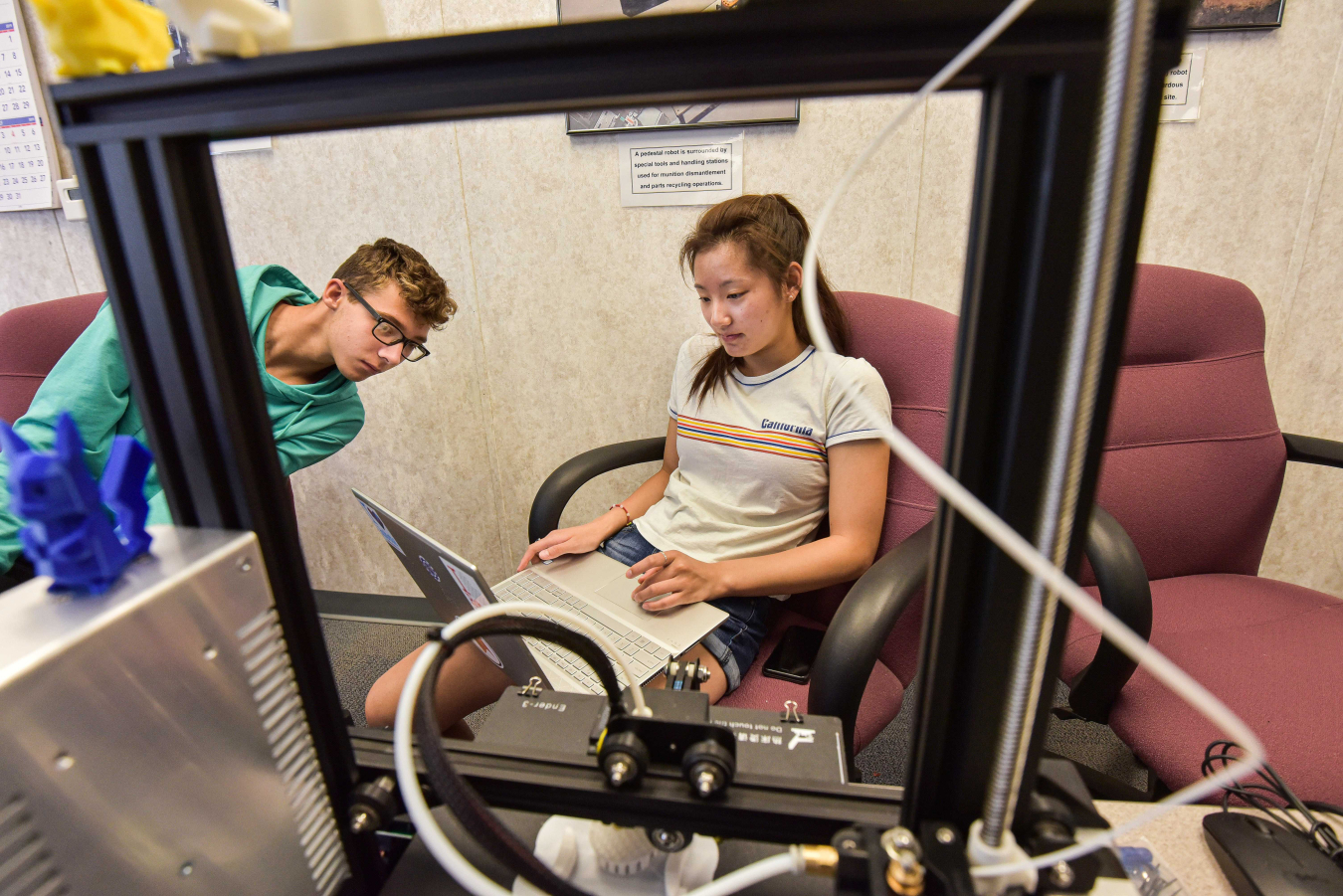Teens who built 3D printers during a weeklong robotics camp at Sandia National Laboratories last year have used them to make over 3,000 face shields.
May 22, 2020
Editor's note: this article was originally published on Sandia National Laboratories' website.
Teens who built 3D printers during a weeklong robotics camp at Sandia National Laboratories last year have used them to make more than 3,000 face shields that have been donated to medical professionals and first responders in New Mexico.
The camp was hosted by Sandia in collaboration with R4 Creating, a nonprofit organization that provides robotics and STEM opportunities for kids. Sandia graduate student intern John Krukar instructed the students at the camp last year and said when he found out what the teens are making, it was a highlight for him during the pandemic.
“It’s easy to feel helpless and think, ‘How could I make a difference?’” he said. “To hear that these kids took what they learned from the camp and together they’re making a difference in the community, it made it feel like we had gotten this awesome return on investment. It was cool to do the camp anyway and ignite their interest in 3D printing and engineering, but now they’re helping our state and our city.”
Fourteen teens participated in the robotics camp last May, then taught more teens how to build 3D printers during summer and winter camps, said Shelly Gruenig, who leads R4 Creating.
Now, about 20 teens are continuously running the machines to create bands that fit around the forehead and can be attached to commercial-off-the-shelf, plastic transparency sheets that cover the face. The face shields offer non-medical grade protection and are often worn in addition to medical-grade personal protective equipment, Gruenig said. The face shields have been delivered at no cost to medical centers, pueblos, fire departments and EMTs. Gruenig said all organizations that were offered the shields have accepted.
“There was such a shortage of supplies,” Gruenig said. “Many of these places didn’t have enough protective equipment for their staff.”
The first 500 face shields were produced using resources the students had, Gruenig said, and financial support from the community helped them continue making more. The original idea came from 16-year-old Kent Nelson who participated in a robotics camp last winter where he learned to build a 3D printer from one of the teens who attended the camp at Sandia.
Nelson’s family had already been brainstorming ideas of how to spend their time in quarantine, and Gruenig challenged the robotics group to think of ways to be productive. Nelson suggested the group could make face shields and he researched best practices for printing them.
“The design we chose is a good one because it’s easy to sanitize,” he said. “It’s also quick to print. It takes about 30-45 minutes, and the materials are really easy to get.”
He said the group plans to keep printing, assembling and delivering the face shields as long as they’re needed.
“It really has been a beautiful thing,” Gruenig said. “We’ve given people hope. People constantly tell me, ‘Oh my gosh, teenagers are doing this?’ This gives me hope for our future with teen leaders like this.”
During the camp at Sandia last year, Krukar provided 3D-model files that participants could use right away to print video game characters, steamboats and lizards; then he helped them design original figurines using free open-source programs. Krukar also used a 3D-depth camera to capture the teenagers so they could print action figures of themselves.
“When we were trying to come up with an idea of what we could teach the kids, we said, hey, let’s do a 3D-printer kit,” said Sandia manager Jake Deuel, who led the camp with Krukar. “We figured kids would make toys. Who knew that they would be used for COVID-19 response to help first responders? When I heard about what they’re doing, it felt like pride and excitement all rolled into one emotion.”
Krukar hopes the teens continue using their skills to teach and help others in the future.
“Now there are even more kids than were at the camp who have built 3D printers. I taught them a few things, and they’re probably better than me now at all this stuff,” he said. “They’re continuing to teach other kids and it has a ripple effect. This has probably been the highlight of the pandemic for me to hear, wow, these guys are doing something. They’re really paying it forward.”
Sandia National Laboratories is a multimission laboratory operated by National Technology and Engineering Solutions of Sandia LLC, a wholly owned subsidiary of Honeywell International Inc., for the U.S. Department of Energy’s National Nuclear Security Administration. Sandia Labs has major research and development responsibilities in nuclear deterrence, global security, defense, energy technologies and economic competitiveness, with main facilities in Albuquerque, New Mexico, and Livermore, California.
Sandia news media contact: Manette Fisher, mfisher@sandia.gov, 505-238-5832

